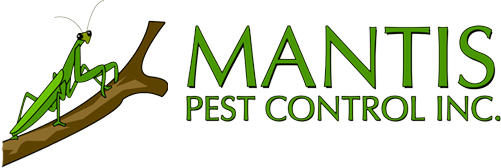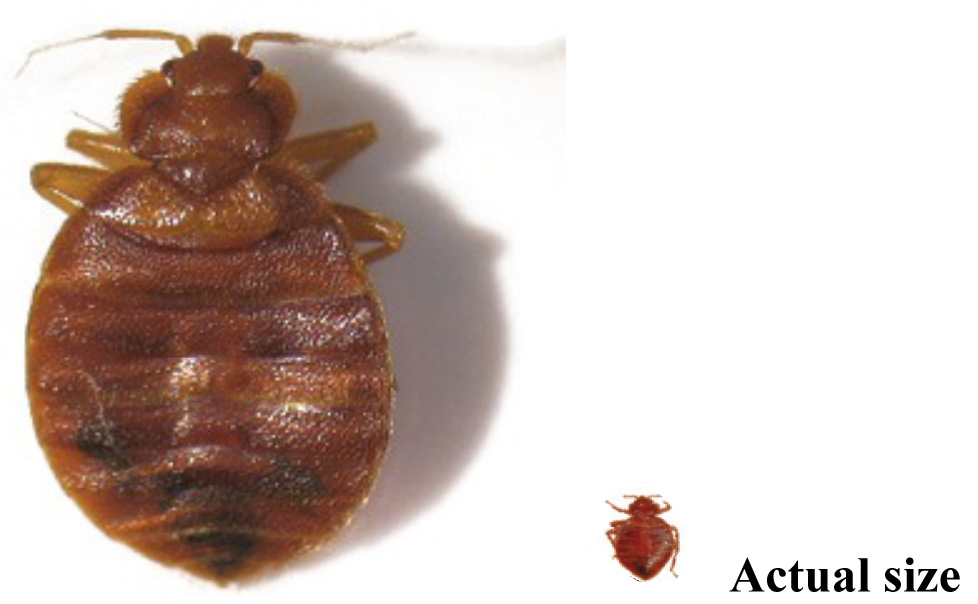



Bedbugs are small insects that feed on humans and warm-blooded animals. These insects are wingless, reddish-brown, and about one-fourth of an inch in length as adults. Bedbugs appear oval and flattened from top to bottom. Immature bedbugs, also called nymphs, are usually lighter in color but otherwise resemble adults.


Bedbugs are most frequently found in dwellings with high occupant turnovers, such as hotels, motels, hostels, dormitories, shelters, apartment complexes, rooming houses, and prisons. Adult bedbugs are typically found hiding in cracks and crevices near sleeping areas during the day and come out at night to feed. Bedbugs can initially be found about the tufts, seams, and folds of mattresses. Meanwhile, their eggs are generally found in cracks and crevices and behind loose wallpaper.
After a bed bug infestation is identified, Mantis Pest Control will complete a series of 3 treatments. Our client must complete the preparation instructions listed below. Each treatment must be scheduled 10-14 days apart. In most situations, 3 treatments will eradicate a bed bug infestation, providing preparation protocols are followed. Mantis Pest Control will guarantee our work for 30 days, beginning the day after the final treatment. If the issue persists, we will continue our process until your home is bed bug free. The protocols and warranty differ for multi-family housing.
Common signs of infestation are blood-stained sheets and dark-colored excrement spots on areas where they hide during the day. Heavily infested areas have a “musty” odor similar to that of large cockroach infestations. A female bedbug may lay 200-500 eggs during her lifetime, usually in batches of 10-50 eggs. However, don’t be alarmed. An infestation of bedbugs does not necessarily mean your dwelling is not clean and sanitary.
Bedbug infestations are spread by contact with infected persons or the use of infested sleeping areas. International travel is thought to aid the spread because eggs, nymphs, and adult bedbugs are transported in luggage, clothing, bedding, and furniture.
Suppose you cannot get professional help or are waiting for your schedule. In that case, control is best achieved through sound sanitation practices such as:
Mattress and box springs can be permanently encased within special mattress bags. To prevent bedbugs from crawling onto a bed, pull the bed frame away from the wall, then tuck in sheets and blankets so they do not contact the floor.
Bedbugs have never been shown to transmit disease. Bites appear as small, whitish, hardened areas surrounded by a larger swollen area. Constant scratching of these bites may result in secondary infection. People should consult a physician if they think bedbugs may have bitten them.
If you use pesticides, read and follow all directions on the label before using. Remember that pesticides are poisonous and should always be used and stored correctly per the manufacturers’ recommendations. It is strongly recommended that a licensed New Jersey pesticide applicator conduct the treatments for bedbug infestations.
It is critical to our service that you properly prepare for our extermination and follow all protocols listed below:
All your residents and pets should be prepared to leave your home for at least four hours after completing the treatment. Pregnant women, infants up to 18 months, asthmatics, and people with severe allergies should vacate the unit for a minimum of 8-12 hours.
In the future, if an infestation is suspected, treatment should be scheduled immediately. All preparation techniques should be utilized.
You may continue to see or experience bedbug activity for up to two weeks after the initial treatment. A second treatment is required to eliminate any newly hatched eggs. We recommend having this 10 to 14 days after the initial one. In extreme cases, further treatments may be necessary.
Upon our arrival, a resident must be available to answer the door. All preparations must be complete before your appointment. Please understand the effectiveness of our treatment relies upon the quality of your preparation. Thank you in advance for your cooperation!
We offer bedbug treatments starting at only $250. If there are any questions concerning your treatment, please give us a call at (908) 757-6161.
© 2021 Mantis Pest Control Inc. All rights reserved. Website by web.com.